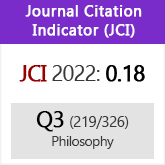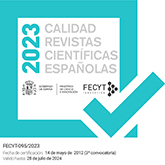¿Tiene futuro la vida sin pasado? El desdén de la evolución en biología sintética
DOI:
https://doi.org/10.3989/isegoria.2016.055.03Palabras clave:
Biología sintética, teoría evolutiva, modularidad, diseño, evolucionabilidadResumen
La biología sintética mantiene una relación muy singular con la teoría evolutiva: por un lado, parte de una interpretación ingenieril de la evolución para fundar su aproximación al diseño de bioartefactos; por otro, la biología sintética aspira, en última instancia, a deshacerse de la evolución creando organismos de novo que se comporten de un modo predecible. Tras examinar las tres grandes propiedades que aparecen recurrentemente en la descripción sintética de los nuevos artefactos orgánicos (su caracterización como sistemas modulares, computables y producto del diseño), argumentaré que la biología sintética se erige sobre una concepción de los organismos y en particular de la relación de estos con su legado histórico que ha sido profundamente cuestionada por la biología evolucionista contemporánea.
Descargas
Citas
Ahouse, J. C. 1998. «The Tragedy of a Priori Selectionism: Dennett and Gould on adaptationism». Biology and Philosophy 13 (3): 359-91. https://doi.org/10.1023/A:1006508719300
Alberch, P. 1982. «The generative and regulatory roles of development in evolution». Environmental adaptation and evolution, 19-36.
Alberch, P. 1991. «From genes to phenotype: dynamical systems and evolvability». Genetica 84 (1): 5-11. https://doi.org/10.1007/BF00123979 PMid:1874440
Amundson, R. 2005. The Changing Role of the Embryo in Evolutionary Thought: Roots of Evo-Devo. Cambridge: Cambridge University Press. https://doi.org/10.1017/CBO9781139164856
Andrianantoandro, E., S. Basu, D. K. Karig, y R. Weiss. 2006. «Synthetic Biology: New Engineering rules for an Emerging Discipline». Molecular Systems Biology 2 (1). https://doi.org/10.1038/msb4100073
Bensaude Vincent, B. 2013. «Between the possible and the actual: Philosophical perspectives on the design of synthetic organisms». Futures 48: 23-31. https://doi.org/10.1016/j.futures.2013.02.006
Calvert, J. 2008. «The Commodification of Emergence: Systems Biology, Synthetic Biology and Intellectual Property». BioSocieties 3 (4): 383-98. https://doi.org/10.1017/S1745855208006303
Church, G. M., y E. Regis. 2013. Regenesis: How Synthetic Biology Will Reinvent Nature and Ourselves. Choice reviews online. Vol. 50. New York: Basic Books.
Darwin, C. 1859. El origen de las especies. Traducido por A. de Zulueta. 6a ed. Alianza Editorial (2003).
Dawkins, R. 1993. El gen egoísta: las bases biológicas de nuestra conducta. Traducido por Juana robles Suárez. Barcelona: Salvat Editores.
Dennett, D. C. 1995. Darwin's Dangerous Idea: Evolution and the Meanings of Life. New York: Simon & Schuster. PMid:7625156
Diéguez, A. 2013. «Biología sintética, transhumanismo y ciencia bien ordenada». Viento Sur / Plural: La biología sinética: desafíos éticos, políticos y socioeconómicos, nº 131: 71-80.
Douglas, T., y J. Savulescu. 2010. «Synthetic biology and the ethics of knowledge». Journal of medical ethics 36 (11): 687-93. https://doi.org/10.1136/jme.2010.038232 PMid:20935316 PMCid:PMC3045879
Duke, S. 2010. «Science Fiction: It's Not about the Future (Part one)». The World in the Satin Bag. http://wisb.blogspot.com.es/2010/11/science-fiction-its-not-about-future. html.
Dyson, F. 2005. «The Darwinian Interlude». MIT Technology Review.
Endy, D. 2005. «Foundations for Engineering Biology». Nature 438 (7067): 449-53. https://doi.org/10.1038/nature04342 PMid:16306983
Etxeberria, A., y K. Ruiz-Mirazo. 2009. «The challenging biology of transients. A view from the perspective of autonomy». EMBO Reports 10 (Suppl 1): S33-36. https://doi.org/10.1038/embor.2009.154 PMid:19636301 PMCid:PMC2726004
Etxeberria, A., y J. Umerez. 2006. «Organismo y organización en la biología teórica. Vuelta al organicismo 50 a-os después». En Medio siglo de doble hélice, 3-38. Palma de Mallorca: Edicions Universitat de les Illes Balears. PMCid:PMC2634026
Gilbert, S. F. 2000. «Diachronic Biology Meets Evo-Devo: C. H. Waddington's approach to Evolutionary Developmental Biology». American Zoologist 40: 729-37. https://doi.org/10.1093/icb/40.5.729
Gilbert, S. F., J. M. Opitz, y R. A. Raff. 1996. «Resynthesizing Evolutionary and Developmental Biology». Developmental Biology 173 (2): 357-72. https://doi.org/10.1006/dbio.1996.0032 PMid:8605997
Gilbert, S. F., y S. Sarkar. 2000. «Embracing complexity: organicism for the 21st century». Developmental Dynamics 219 (1): 1-9. https://doi.org/10.1002/1097-0177(2000)9999:9999<::AID-DVDY1036>3.0.CO;2-A
Gould, S. J. 2004. La Estructura de la Teoría de la Evolución. Barcelona: Tusquets Editores.
Gould, S. J. y R. C. Lewontin. 1979. «The Spandrels of San Marco and the Panglossian Paradigm: a Critique of the adaptationist Programme». Proceedings of the Royal Society of London 205 (1161): 581-98. https://doi.org/10.1098/rspb.1979.0086 PMid:42062
Grushkin, D. 2012. «The rise and Fall of The Company That Was Going To Have us all using Biofuels». Fast Company. http://www.fastcompany.com/3000040/rise-andfall- company-was-going-have-us-all-using-biofuels.
Kant, I. 1973. Crítica del juicio. Traducido por M. G. García Morente, M. Méjico D.F.: Porrúa.
Kitano, H. 2004. «Biological robustness». Nature Reviews Genetics 5 (11): 826-37. https://doi.org/10.1038/nrg1471 PMid:15520792
Koonin, E. V. 2002. "How Many Genes Can Make a Cell: The Minimal-Gene-Set Concept." Annual Review of Genomics and Human Genetics 1: 99-116. https://doi.org/10.1146/annurev.genom.1.1.99 PMid:11701626 PMCid:PMC4780915
Kwok, R. 2010. «Five Hard Truths for Synthetic Biology». Nature News 463 (7279): 288-90. https://doi.org/10.1038/463288a PMid:20090726
Lévi-Strauss, C. 1993. «Raza e historia». En Raza y cultura. Madrid: Altaya.
Morange, M. 2009. «A critical perspective on synthetic biology». HYLE—International Journal for Philosophy of Chemistry 15: 21-30.
Müller, G. B., y S. A. Newman. 2003. «Origination of organismal Form: The Forgotten Cause in Evolutionary Theory». En Origination of Organismal Form: Beyond the Gene in Developmental and Evolutionary Biology, 3-10. Bradford Books.
Newman, S. A. 2012. «Synthetic Biology: Life as app Store». Capitalism Nature Socialism 23 (1): 6-18. https://doi.org/10.1080/10455752.2011.648832
Nu-o de la Rosa, L. 2013. «¿Puede ser la vida objeto de ingeniería?». Viento Sur / Plural: La biología sinética: desafíos éticos, políticos y socioeconómicos, nº 131: 42-51.
O'Malley, M. A. 2009. «Making knowledge in synthetic biology: Design meets kludge». Biological Theory 4 (4): 378. https://doi.org/10.1162/BIOT_a_00006
O'Malley, M. A., A. Powell, J. F. Davies, y J. Calvert. 2008. «Knowledge-Making Distinctions in Synthetic Biology». BioEssays 30 (1): 57-65. https://doi.org/10.1002/bies.20664 PMid:18081015
Paley, W. 1802. Natural theology: or, evidence of the existence and attributes of the deity, collected from the appearances of nature. Editado por M. Eddy y D. M. Knight. Oxford University Press, USA.
Pavone, V. 2013. «¿Hacia una naturaleza neoliberal?». Viento Sur / Plural: La biología sinética: desafíos éticos, políticos y socioeconómicos, nº 131: 61-70.
Rai, A. y J. Boyle. 2007. «Synthetic Biology: Caught between Property rights, the Public Domain, and the Commons». PLoS Biol 5 (3): e58. https://doi.org/10.1371/journal.pbio.0050058 PMid:17355173 PMCid:PMC1821064
Robert, J. S. 2004. Embryology, epigenesis, and evolution. Cambridge university Press. https://doi.org/10.1017/CBO9780511498541
Ruiz-Mirazo, K. y A. Moreno. 2012. «Biología sintética: enfrentándose a la vida para comprenderla, utilizarla o extenderla». Pasajes: Revista de pensamiento contemporáneo, nº 38: 28-37.
Salazar-Ciudad, I. 2006. «Developmental constraints vs. variational properties: how pattern formation can help to understand evolution and development». Journal of Experimental Zoology Part B: Molecular and Developmental Evolution 306B (2): 107-25. https://doi.org/10.1002/jez.b.21078 PMid:16254986
Schrödinger, E. 1944. What's Life. Cambridge: Cambridge University Press.
Tucker, J. B. y R. A. Zilinskas. 2006. «The promise and perils of synthetic biology». New Atlantis 12 (1): 25-45. PMid:16832953
Van Den Belt, H. 2009. «Playing god in Frankenstein's footsteps: synthetic biology and the meaning of life». NanoEthics 3 (3): 257-68. https://doi.org/10.1007/s11569-009-0079-6 PMid:20234875 PMCid:PMC2837218
Wagner, A. 2008. «Robustness and Evolvability: a Paradox resolved». Proceedings of the Royal Society B: Biological Sciences 275 (1630): 91-100. https://doi.org/10.1098/rspb.2007.1137 PMid:17971325 PMCid:PMC2562401
Wagner, G. P. y L. Altenberg. 1996. «Perspective: Complex adaptations and the Evolution of Evolvability». Evolution 50 (3): 967-76. https://doi.org/10.2307/2410639
Wagner, G. P. y M. D. Laubichler. 2004. «rupert riedl and the re-Synthesis of Evolutionary and Developmental Biology: Body Plans and Evolvability». Journal of Experimental Zoology Part B-Molecular and Developmental Evolution 302B (1): 92-102. https://doi.org/10.1002/jez.b.20005 PMid:14760655
Descargas
Publicado
Cómo citar
Número
Sección
Licencia
Derechos de autor 2016 Consejo Superior de Investigaciones Científicas (CSIC)

Esta obra está bajo una licencia internacional Creative Commons Atribución 4.0.
© CSIC. Los originales publicados en las ediciones impresa y electrónica de esta Revista son propiedad del Consejo Superior de Investigaciones Científicas, siendo necesario citar la procedencia en cualquier reproducción parcial o total.Salvo indicación contraria, todos los contenidos de la edición electrónica se distribuyen bajo una licencia de uso y distribución “Creative Commons Reconocimiento 4.0 Internacional ” (CC BY 4.0). Puede consultar desde aquí la versión informativa y el texto legal de la licencia. Esta circunstancia ha de hacerse constar expresamente de esta forma cuando sea necesario.
No se autoriza el depósito en repositorios, páginas web personales o similares de cualquier otra versión distinta a la publicada por el editor.














